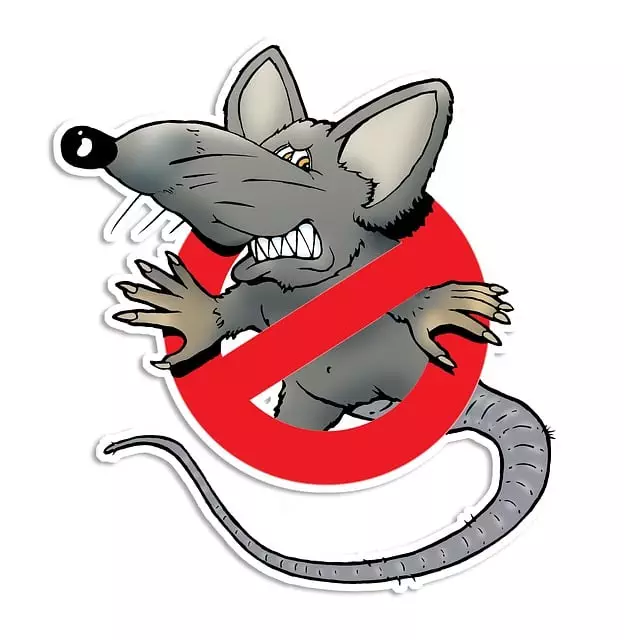Rodents like mice and rats pose significant challenges, causing damage and health risks. Understanding their behaviors—preferring tiny spaces and food-rich areas (mice) or chewing through materials (rats)—is crucial for identifying entry points. Signs of infestation include nocturnal activity, gnaw marks, droppings, and odors. Effective rodent control involves sealing entry points with steel wool, caulk, or metal sheeting, along with non-chemical deterrents like scent-based repellents. Severe infestations may require chemical solutions applied by professionals for robust protection. DIY methods offer temporary relief, but persistent issues necessitate professional intervention and specialized techniques for comprehensive rodent control. Proactive maintenance, including regular inspections and proper food storage, prevents future infestations.
Rodent infestations can quickly turn from a nuisance to a serious problem, causing damage and health risks. Understanding these persistent pests and their behaviors is the first step towards effective rodent control. This guide covers everything from identifying entry points in your home or business to exploring natural deterrents, chemical solutions, professional help, and maintenance strategies. By implementing these robust rodent proofing solutions, you can reclaim your space and prevent future invasions.
Understanding Rodent Infestations: Common Types and Behaviors

Rodent infestations can be a significant problem for both residential and commercial properties, leading to extensive damage and health risks. Understanding the common types of rodents and their behaviors is crucial for effective rodent control. The most prevalent intruders include mice and rats, each with unique characteristics. Mice, known for their minuscule size and agility, often gain entry through tiny cracks and crevices, preferring areas that offer easy access to food and water. Rats, on the other hand, are larger and less shy, capable of chewing through solid materials like wood to find passageways. They tend to establish nests in attics, walls, or crawl spaces, creating intricate networks of tunnels.
Recognizing their behavioral patterns is key to prevention. Rodents are primarily nocturnal creatures, seeking shelter during the day and becoming active at night. They leave behind distinct signs, such as gnaw marks, droppings, and peculiar odors, indicating their presence. Understanding these behaviors allows property owners and managers to implement tailored strategies for rodent proofing, ensuring a more comprehensive approach to maintaining a pest-free environment.
Identifying Entry Points: Locating Weak Spots in Your Home or Business

Rodent control begins with identifying entry points, those weak spots in your home or business where rodents can slip in. It’s important to remember that rodents are persistent and resourceful; they’ll find a way through cracks, gaps, and even tiny openings. Inspecting your property for signs of infestation, such as chewed wires, holes in walls or ceilings, and droppings, is crucial in pinpointing these entry points. Once identified, sealing these areas with materials like steel wool, caulk, or metal sheeting creates a robust barrier that makes it significantly harder for rodents to gain access.
A thorough inspection should cover the exterior of your building, focusing on areas where utilities enter, vents, and any other potential openings. Don’t overlook the ground around your foundation; rodents can burrow and create tunnels leading directly under your home. Addressing these entry points is a critical step in effective rodent control, breaking up their access routes and disrupting their ability to establish and expand infestations.
Non-Chemical Deterrent Methods: A Natural Approach to Rodent Control

Non-chemical deterrent methods offer a natural and eco-friendly approach to rodent control, appealing to those who prefer non-toxic solutions for their homes or businesses. These methods focus on using physical barriers, sound waves, and scent-based repellents to keep rodents at bay without resorting to chemicals. Physical deterrents like steel wool, metal mesh, and plastic sheets can be used to seal entry points, preventing rodents from gaining access to structures. Sound waves generated by specific devices mimic natural predators’ sounds, creating an unpleasant environment for rodents that encourages them to find a new home.
Additionally, scent-based repellents are effective because many rodents have a strong sense of smell. Natural scents like peppermint, eucalyptus, and cayenne pepper can act as deterrents when applied in strategic areas. These non-chemical methods not only provide an alternative to traditional rodent control products but also ensure a safer environment for pets and humans by eliminating exposure to harmful chemicals.
Chemical Solutions: Effective Treatments for Serious Infestations

When it comes to severe rodent infestations, chemical solutions offer robust and effective treatments for achieving rodent control. These professional-grade chemicals are designed to target and eliminate rodents humanely and efficiently. They can be applied in hard-to-reach areas that are often inaccessible to traditional methods, making them ideal for thorough pest management.
The benefits of chemical solutions include their longevity, as they can continue to protect against future infestations for extended periods. These treatments are particularly useful in commercial properties, industrial sites, and homes with recurring rodent issues. With the help of trained professionals, property owners can implement these chemical solutions safely, ensuring minimal risk to human health and pets while effectively keeping rodents at bay.
Professional Help: When to Hire Experts for Comprehensive Rodent Management

Many homeowners attempt DIY methods to prevent and manage rodent infestations, but there are times when professional help is essential for comprehensive rodent control. While setting traps, sealing entry points, and using repellents can be effective, severe or persistent rodent problems may require expertise that goes beyond traditional measures.
Hiring pest control experts specialized in rodent management offers several advantages. These professionals have the necessary tools, knowledge, and experience to handle complex cases effectively. They employ advanced techniques like thermal imaging, scent removal, and humane trapping methods. Moreover, they can identify the specific species causing trouble, which is crucial for tailoring treatment plans. This ensures not only efficient control but also prevents future invasions.
Maintenance and Prevention: Long-Term Strategies for Keeping Rodents at Bay

Maintaining a rodent-free environment requires a proactive approach, focusing on both prevention and ongoing maintenance for effective rodent control. Regular inspection is key to identifying potential entry points, such as cracks or gaps in walls, floors, or ceilings. Sealing these openings with appropriate materials like steel wool, caulk, or foam insulation creates a physical barrier that discourages rodents from gaining access. Additionally, keeping the exterior of your property well-maintained, including trimming vegetation and securing garbage cans, significantly reduces attractions for rodents seeking food and shelter.
Long-term strategies also involve maintaining cleanliness and sanitizing areas prone to rodent activity. Promptly addressing leaks and ensuring proper drainage deters rodents as they prefer damp environments. Regularly storing or sealing food items in airtight containers and eliminating potential water sources prevents rodents from finding sustenance, thereby discouraging their presence. These integrated pest management practices, combined with periodic professional inspections, form a robust defense against rodent infestations, ensuring a safe and hygienic living space for years to come.
